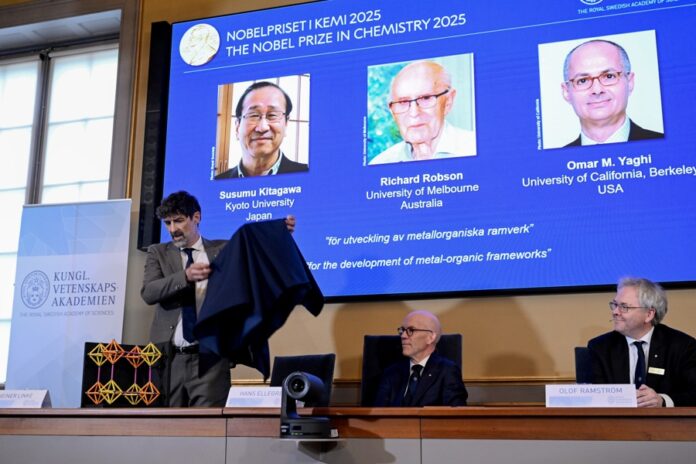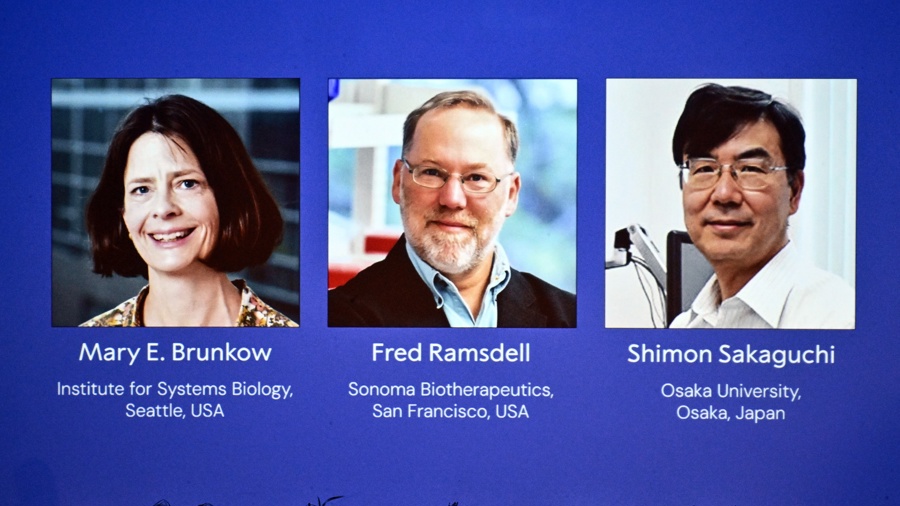
Copenhagen, Oct 8 (EFE).—
The 2025 Nobel Prize in Chemistry has been awarded to Japan’s Susumu Kitagawa, the United Kingdom’s Richard Robson, and Jordan’s Omar M. Yaghi creating “molecular constructions with large spaces through which gases and other chemicals can flow.”

The Royal Swedish Academy of Sciences announced Wednesday that the three laureates were honored for developing a novel type of molecular architecture called metal-organic frameworks that contain vast cavities that allow molecules to enter and exit freely.
“These constructions, metal–organic frameworks, can be used to harvest water from desert air, capture carbon dioxide, store toxic gases or catalyse chemical reactions,’’ the academy said in a statement.

The academy said the development of MOFs has opened new opportunities for chemists to tackle some of the challenges humanity faces.
“Metal–organic frameworks have enormous potential, bringing previously unforeseen opportunities for custom-made materials with new functions,” said Heiner Linke, Chair of the Nobel Committee for Chemistry.
Following their groundbreaking discoveries, researchers around the world have designed countless variations of functional MOFs. Although most are still used on a small scale, numerous companies are now investing in their mass production and commercialization, and some have already succeeded.

For instance, the electronics industry can now use MOF materials to trap toxic gases needed in semiconductor manufacturing, while other MOFs can decompose harmful gases, including those that could be used as chemical weapons. Several firms are also testing MOFs capable of capturing carbon dioxide from factories and power plants to help curb greenhouse gas emissions.Some scientists believe that metal-organic frameworks have such enormous potential that they could become the “material of the 21st century.”Yaghi developed a highly stable MOF and demonstrated that it could be modified through rational design to gain new and desirable properties. Kitagawa showed that gases could move in and out of the structures and predicted that MOFs could be made flexible.In 1989, Robson pioneered a new way to exploit the intrinsic properties of atoms by combining positively charged copper ions with a four-armed molecule.

Each arm carried a chemical group attracted to copper ions, and when combined, they formed a spacious, well-ordered crystal — a diamond-like lattice full of microscopic cavities.
Susumu Kitagawa, was born 1951 in Kyoto, Japan. He did his PhD in 1979 from KyotoUniversity, Japan.

Richard Robson, was born 1937 in Glusburn, UK. He did his PhD in 1962 from Universit of Oxford, UK.
Omar M. Yaghi, was born 1965 in Amman, Jordan. He did his PhD in 1990 from University of Illinois Urbana Champaign, US. EFE

ber-alc-sk




